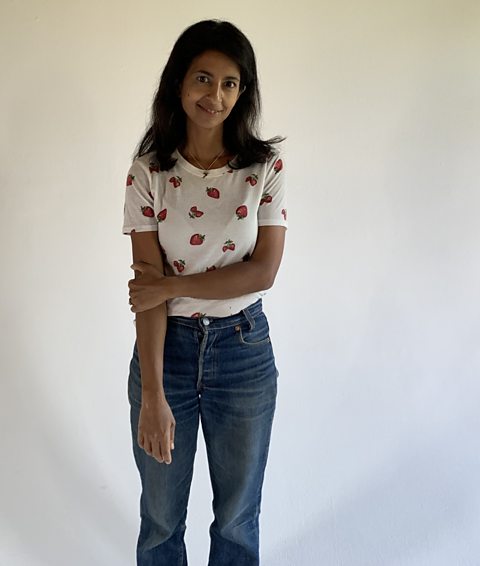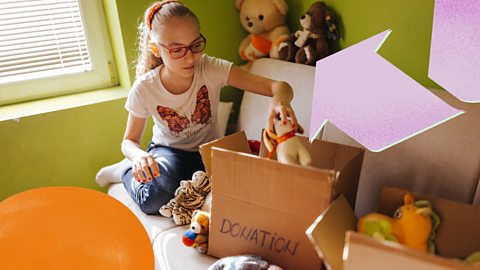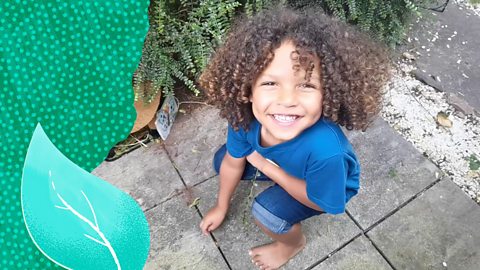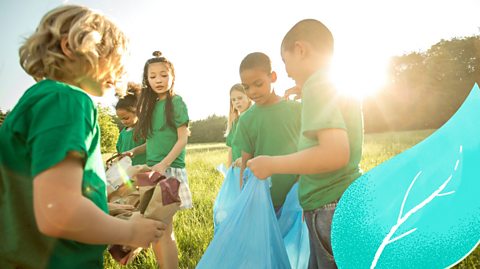
Sustainability is a subject we hear a lot about at the moment.
With so many people wanting to make positive changes in their lives to benefit the environment, it can be daunting to know where to begin.
One person who knows a lot about the subject is children’s author Konnie Huq. The title character of her latest release, Cookie and the Most Annoying Girl in the World, is passionate about saving the planet - a trait she shares with her creator, who is a former Blue Peter presenter. If you’re a little unsure how to make sustainability part of your life, Konnie tells The Regenerators from В鶹ԼЕД Bitesize how she made it an important piece of hers.

Ever since I was young, my parents encouraged me to not waste things.
They had come to the UK from Bangladesh, a country in which some people have nothing. They taught me that it’s really important to value things and not treat items we possess as disposable as it’s frivolous and irresponsible.
One example of valuing what we have came at meal times. Instead of putting loads of food on my plate and scraping off what I couldn’t eat into the bin, I had less on my plate and would go back for more when I wanted it. It was important not to throw food away because some people didn’t have any.
I’ve always known it’s not wise to waste stuff and, with respect to sustainability, everything has a carbon footprint.
Konnie Huq explains that by walking more, washing our clothes less, and other cost-efficient actions, we can live a more sustainable life.
The footprint of every consumer product comes from the processes to manufacture it, transporting of the raw materials, distribution to shops and outlets, consumers traveling to the shops to make the purchases… it all adds up. Even if you’re buying a product made out of a natural material such as wood or cotton, you still have this associated carbon footprint – the transportation, distribution and manufacturing all using fossil fuels. The more we waste food, and other materials, the higher that footprint is.
For all these reasons, I try to live sustainably by having as low a carbon footprint as possible. I no longer buy clothes – I’m not growing, and I’ve got so many I reuse those I have as much as possible. I drive an electric car and I pretty much only buy things if there is no other option.
I have solar panels on my roof at home, and try to walk and bike places as much as possible. Another important factor is trying to use items for as long as possible and not treating things as disposable.

If you’re coming to a sustainable way of life completely fresh, there are things you can do right now that can make a difference. It’s little things such as taking fewer baths and having more showers. Remember to turn lights off when nobody is using them, including the stand-by lights on electrical products. Cutting down on buying single-use plastics will also make a difference.
One example is if you’re leaving some leftover in the fridge to be used for another meal. Try to avoid covering it in cling film as it’s a single-use plastic. Instead, think about putting in a reusable container; it can even be an old margarine tub. It helps you as you’re not splashing out on something new and you’re also being sustainable with regards to plastic use.

It’s not just the small items in our life that have become disposable. We hear of disposable fashion, but it’s all too easy to rip out a fitted kitchen from five years ago to put a brand new one in just because you didn’t like the cupboard doors. But we don’t hear of people talking of disposable fitted kitchens! It’s really good to try to upcycle, recycle and mend and make-do.
Instead of buying a new top for ВЈ10, try to think of the other things that ВЈ10 could do: feed mouths, save lives, plant trees. And will that top just end up in the landfill? Will you just get bored of it after a few months?
Upcycling is one of the ways I try to instil these values in my own kids, who are seven and nine. Crafting is a really good way of using what you already have in a fun and engaging manner and it helps teach them about sustainability, so that it becomes part of everyday life. I also want them to know that money and possessions should be valued because there are so many people without.
That can be a lot to take in in one go, so my tips for sustainable living in a handy list are:
- Recycle, upcycle, mend and make-do
- Walk or cycle to places rather than taking the car
- Eat less meat
- Turn light switches off and don’t keep that tap running if you’re not using it!
- Take showers instead of baths
- Use natural materials wherever possible – a bag for life, a reusable metal water bottle and so on.
- Spread the word!

How to be a zero-waste hero
THE REGENERATORS

Easy family activities to feel closer to nature
THE REGENERATORS

How to talk to your child about climate change
PARENTS' TOOLKIT

Back to The Regenerators
В鶹ԼЕД BITESIZE
